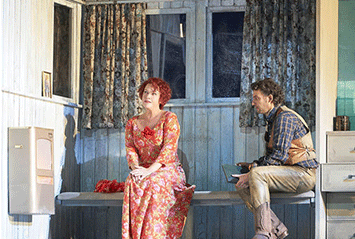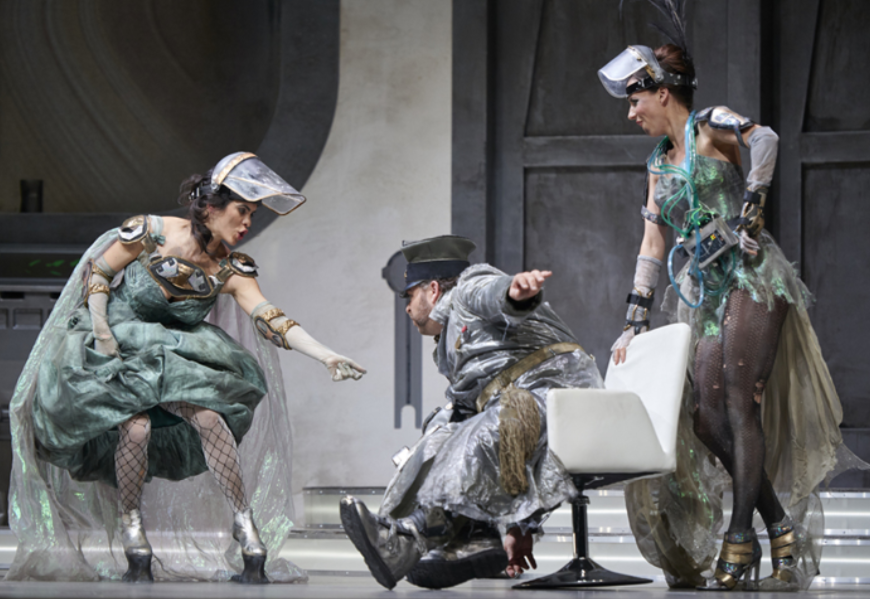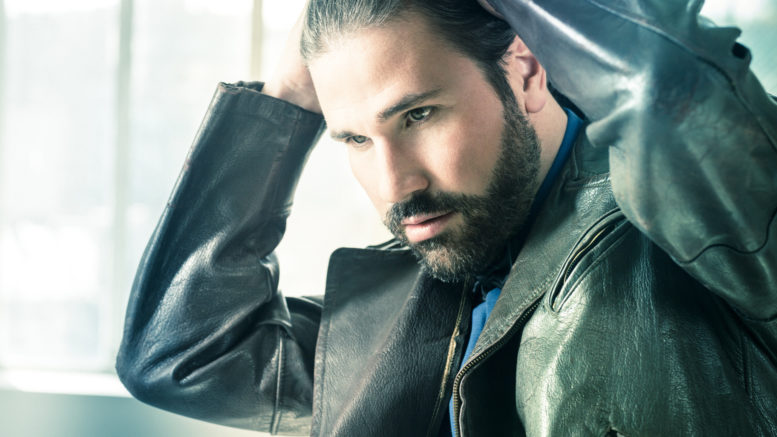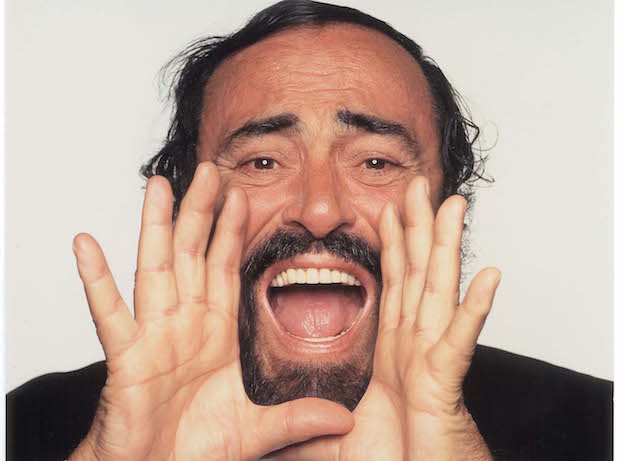La Fanchiulla del West. Puccini. Viena
Vienna Staatsoper. 14 October 2013
it is curious, that this opera of Giacomo Puccini one of the best musically, richly chromatic and orchestral, has never been a very popular work, although it is been more showed in recent years, due to the interest that some sopranos and some musical directors have shown.
The latter seems to have been the definitive argument so that the Staatsoper of Vienna has decided to mount a new production of this opera, which was absent from the stage since 25 years ago, when Placido Domingo and Mara Zampieri staged it. Interest in programming it by the music director, Franz Welser-Möst, has made the miracle to convince two large divos to debut in the protagonists of the opera roles. The result has been good, although it is important to clarify some aspects, since not everything has reached the expected level.
It is, as I said, a new production, carrying the signature of Marco Arturo Marelli, which is one of the stage managers, whose productions are always characterized by good taste. On this occasion Marelli tries to leave the atmosphere of the Far West, that as it is present in the work of David Belasco as in the libretto of the opera, in which both Giacomo Puccini liked to take part. Even if you want to leave the too kitsch environment of the Wild West, attempts tend not to reach it’s intention, since the script is riddled with references to the same. Marco Arturo Marelli moves the action to modern times, around mid of the last century, placing it in a mining village, where workers come in the first act to the Bar, which is not exactly La Polka of the libretto, but a kind of trailer of which abound in so many places for the sale of sausages.
Minnie’s hut is a trailer-home, in which electric cooktops only denounce that we are not in the Far West. Finally, the last act takes place in the parking lot of the railroad of the town, surrounded by metal containers. The thing works reasonably well and not thumping but slightly.
This proper scenery is the work of Marco Arturo Marelli, as it is also the work of lighting. Dagmar Niefind clothing is appropriate, although Minnie does not go very well with the ideas of the costume designer. A little childish is the final detail in that Minnie and Dick Johnson leave village in the nacelle of a globe with the colours of the Rainbow, more adequate detail for an opera buffa, as Emilio Sagi did in the Barber of Seville of the Teatro Real.
The stage direction done by Marelli is good, moving properly the masses which have so much importance during the first act of the opera. With main characters he did not have to break much his head, since they are perfectly outlined in the booklet. All an all, is an attractive production, which is pleased and that does not leave a lasting memory.
In the Franz Welter-Most interest in the recovery of this opera was one of the greatest problems of this representation. When a conductor bets for an opera, there is always the risk that his vision of the opera darks all. This is what has happened in some way on this occasion. Welser-Möst provides a nearly symphonic reading of the opera, in which one can enjoy this music as a few times, especially counting on the presence in the pit of Orchester der Wiener Staatsoper, this time it has been spectacular. The problem of Welser-Möst is forgetting that on the stage there are singers, clearly suffering the inclemency from excessive sound volume the director took out of the pit. Small voices are not exactly those of the three protagonists of the opera, but only Minnie was able to transfer the real barrier of sound between the stage and the Hall. Good also the performance of the Choir der Wiener Staatsoper, although they were also struggling to be listened. In summary, a wonderful musical version, spectacular, if you want, but a theatre of opera is not a room of concerts.
The great Nina Stemme was Minnie, the protagonist of the opera, and was the winner of the night. He won the poker game and, with the help of the globe, it flew very high. The Swedish soprano is in a splendid moment both vocal and stage and its interpretation was the best of the night. There is no sound barrier that she knocks down with his powerful and attractive voice. It is also a great performer. After her final phrase of the second act Tre assi e a paio, the sheriff had no choice but to run from the scene, although the script had not said it.
Jonas Kaufmann was somewhat disappointing as Dick Johnson or, if you prefer, the Bandit Ramerrez. He suffered the consequences of Welser-Möst Gale and rarely have I been so conscious that their center voice tend to stay behind, while the acute is much better given. We would have to see him in other more friendly conditions for him, but I’ll stick with the impression that his center voiceis missing weight and projection for this character. He sang with very good taste the always expected Ch’ it libero mi creda e lontano.
The Polish baritone Tomasz Konieczny was a convincing Jack Rance in scene, always a real evil, but vocally is not at the same height. The Center is guttural and poorly delivered, reaching the room with difficulties. A darker voice is needed for this character. I confess that I remembered even of Silvano Carrolli.
The numerous secondary characters were well covered, although unable to traverse the orchestral mass. The best part was taken by Boaz Daniel in the sound part. Norbert Ernst offered a reduced voice at Nick. Little vocal interest can offer the baritone Paolo Rumetz as Ashby, the agent of the Wells-Fargo. Good impression left by Juliette Mars as Wowkle, as well as also caught my attention the voices of Jongmin Park (Billy Jackrabbit) and Alessio Arduini (José Castro).
The State Opera hanged again the tickets sold cartel. Public dedicated an undeniable triumph in final greetings to Nina Stemme and Jonas Kaufmann, while Tomasz Konieczny was greeted with audible bravos and boos, higher the first than the last. The show began promptly and lasted a total time of 2 hours and 35 minutes, including an intermission. Musical duration was 2 hours and 7 minutes. The final applause continued for no less than 13 minutes, but must say that the last 5 minutes were provoked by a small group of spectators who “forced» over and over again to come out to greet to their beloved divos.
The price of the most expensive ticket was 212 euros. In the upper floors prices ranged between 99 and 185 euros. The cheapest entry cost 35 euros, there were, as always, standing tickets for 13 euros.
José M. Irurzun
Traducción: María García-Rosado
















